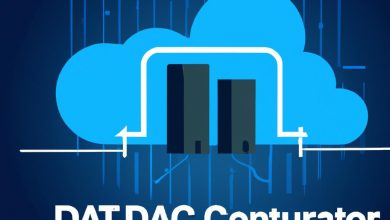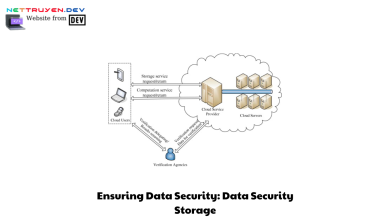Cloud Data Modeling Tools: Leveraging the Power of the Cloud

As businesses grow and the amount of data they generate increases, managing and organizing that data becomes more challenging. cloud data modeling tools provide a viable solution to this challenge. In this article, we’ll explore the benefits of using cloud data modeling tools, the different types available, features to look for, and the top tools in the market. By the end of the article, you’ll have a better understanding of cloud data modeling tools and be better equipped to choose the right one for your business.
Definition of Cloud Data Modeling Tools

Cloud data modeling tools are software applications that enable businesses to create and manage data models in the cloud. These tools allow organizations to store data in the cloud, access it from anywhere, and collaborate with team members in real-time. Cloud data modeling tools are designed to help businesses organize, analyze, and visualize their data, making it easier to gain insights and make data-driven decisions.
Importance of Using Cloud Data Modeling Tools

Data is a valuable asset for any business, and managing it effectively is crucial for success. Cloud data modeling tools provide businesses with a centralized location to store and manage their data, making it easier to access and share. These tools also make it easier to collaborate with team members, regardless of their location, improving productivity and efficiency. Additionally, cloud data modeling tools provide businesses with the ability to analyze and visualize their data, making it easier to gain insights and make data-driven decisions.
Brief Overview of the Article
In the following sections, we’ll explore the benefits of using cloud data modeling tools, the different types available, features to look for, and the top tools in the market. By the end of the article, you’ll have a better understanding of cloud data modeling tools and be better equipped to choose the right one for your business. So, let’s dive in!
Benefits of Using Cloud Data Modeling Tools
As businesses continue to generate more data, it becomes increasingly important to manage that data effectively. Cloud data modeling tools provide businesses with a range of benefits that make data management easier and more efficient. Let’s take a closer look at some of the key benefits of using cloud data modeling tools.
Cost-effective Solution
One of the primary benefits of using cloud data modeling tools is that they are a cost-effective solution. Cloud-based tools eliminate the need for businesses to invest in expensive hardware or software licenses, which can be a significant expense. With cloud data modeling tools, businesses can pay for the resources they use, making it a more affordable option for businesses of all sizes.
Scalability and Flexibility
Another key benefit of using cloud data modeling tools is that they are scalable and flexible. As businesses grow and their needs change, cloud-based tools can easily adapt to meet those changing needs. Cloud data modeling tools can scale up or down as needed, and businesses only pay for the resources they use. This makes it easier for businesses to manage their data, regardless of their size or growth trajectory.
Improved Collaboration and Communication
Cloud data modeling tools also improve collaboration and communication among team members. With cloud-based tools, team members can access data from anywhere, at any time, making it easier to work together, even if team members are located in different geographic locations. Cloud data modeling tools also make it easier to share data securely, allowing team members to work together more efficiently and effectively.
Real-time Data Analysis and Reporting
Finally, cloud data modeling tools provide businesses with the ability to analyze and report on their data in real-time. This is a significant advantage over traditional data management methods, which often require time-consuming manual processes to analyze data. With cloud data modeling tools, businesses can gain insights into their data much faster, making it easier to make data-driven decisions that can positively impact their bottom line.
Features to Look for in Cloud Data Modeling Tools
When choosing a cloud data modeling tool, there are several features to consider. These features can help you ensure that the tool meets your business needs and helps you manage your data effectively.
User-friendly Interface
A user-friendly interface is essential for any software application, and cloud data modeling tools are no exception. The tool should be easy to use, with a simple and intuitive interface that allows users to navigate and access the features they need quickly. A user-friendly interface can improve productivity and make it easier for team members to collaborate effectively.
Data Security and Privacy
Data security and privacy are critical when using cloud data modeling tools. The tool should provide robust security features to protect your data, such as encryption, access controls, and data backups. The tool should also comply with relevant data privacy regulations, such as GDPR or CCPA.
Integration with Other Tools and Platforms
Integration with other tools and platforms can enhance the functionality of cloud data modeling tools. The tool should be able to integrate with other software applications that your business uses, such as CRMs, ERPs, or BI tools. This integration can help streamline workflows and provide a more comprehensive view of your data.
Data Backup and Recovery
Data backup and recovery are essential features for any cloud data modeling tool. The tool should provide regular backups of your data to ensure that it is not lost due to system failures, cyber-attacks, or other events. The tool should also provide a way to recover data quickly and easily in the event of data loss.
By considering these features when choosing a cloud data modeling tool, you can ensure that the tool meets your business needs and helps you manage your data effectively.
Top Cloud Data Modeling Tools in the Market
Cloud data modeling tools have become increasingly popular over the years, and there are now many options available in the market. Here are some of the top cloud data modeling tools that businesses can consider:
Google Cloud Dataflow
Google Cloud Dataflow is a fully-managed cloud service for processing and analyzing data in real-time. It enables businesses to build and deploy data processing pipelines quickly and easily. With Google Cloud Dataflow, businesses can leverage Apache Beam to create data processing pipelines that are portable, scalable, and efficient.
Amazon Web Services (AWS) Glue
AWS Glue is a fully-managed extract, transform, and load (ETL) service that makes it easy to move data between data stores. It can automatically discover data sources, infer schemas, and generate ETL code to transform data. AWS Glue also provides a serverless environment that automatically scales to handle any size workload.
Microsoft Azure Data Factory
Microsoft Azure Data Factory is a cloud-based data integration service that enables businesses to create, schedule, and manage data pipelines. It supports a wide range of data sources, including on-premises, cloud-based, and hybrid data sources. With Azure Data Factory, businesses can easily move and transform data at scale.
Talend Cloud
Talend Cloud is a unified data integration and data integrity platform that enables businesses to connect, manage, and govern all their data. It provides a wide range of connectors and pre-built integrations, making it easy to move and transform data between different systems. Talend Cloud also provides a unified user interface for managing data quality and governance.
Informatica Cloud Data Integration
Informatica Cloud Data Integration is a cloud-based data integration service that enables businesses to connect and integrate data from various sources. It provides a wide range of connectors and pre-built integrations, making it easy to move and transform data between different systems. Informatica Cloud Data Integration also provides advanced data quality features to ensure data accuracy and consistency.
When choosing a cloud data modeling tool, it’s important to consider your specific needs and requirements. Each of these tools has its own strengths and weaknesses, so it’s essential to evaluate them thoroughly before making a decision.
Conclusion: Choosing the Right Cloud Data Modeling Tool
As we’ve seen, cloud data modeling tools provide businesses with an efficient way to manage and analyze their data. With so many options available, it’s essential to choose the right tool for your business needs. When evaluating different cloud data modeling tools, consider factors such as user-friendliness, data security, integration capabilities, and data backup and recovery options.
Some of the top cloud data modeling tools on the market include Google Cloud Dataflow, AWS Glue, Microsoft Azure Data Factory, Talend Cloud, and Informatica Cloud Data Integration. Each of these tools has unique features and capabilities, making it essential to evaluate each one carefully before making a decision.
In conclusion, Cloud Data Modeling Tools can help businesses improve data management and analysis, leading to better decision-making. When choosing a cloud data modeling tool, it’s important to consider factors such as user-friendliness, data security, integration capabilities, and data backup and recovery options. With the right tool in place, businesses can leverage the power of the cloud to take their data management to the next level.
Conclusion: So above is the Cloud Data Modeling Tools: Leveraging the Power of the Cloud article. Hopefully with this article you can help you in life, always follow and read our good articles on the website: nettruyen.dev




